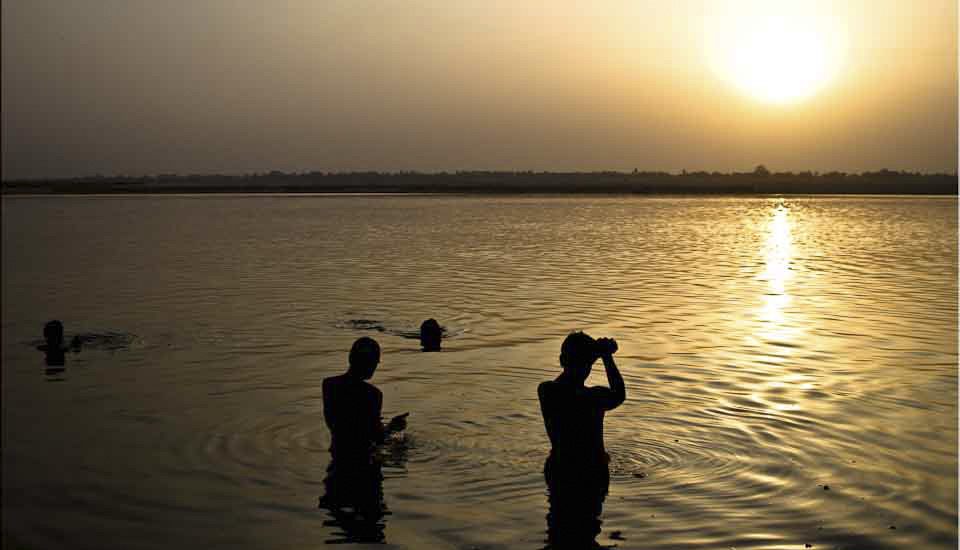.jpg)
Intimacy
The blocky figures in the Vigeland installation in Frogner Park, Oslo, have a commanding immediacy.
When I think of Oslo, Norway, I think of sculpture: sculptured spaces and sculptured figures and objects. I had seen pictures of the famous Vigeland installation of Frogner Park, Oslo in an inflight magazine years ago, and this had coloured my expectations before my visit to the city in May.
I didn’t arrive under the best of circumstances: my husband – who was meant to be travelling with me – had been called back to Australia prematurely, and my phone had died. I’m used to travelling alone – and often have no phone or internet coverage, but still …
A friend laughed at me when she heard I was without my phone, but these days it is my lifeline – especially when I’m on the road: it is my map, my walking guide, and my direction finder; it is my appointment book, my diary and my alarm clock; it is my address book and my mini-camera. I use it to work out exchange rates and to translate problematic language. It keeps me connected to people at home and around the world, and allows me to book the next accommodation.
So, I was adrift in a strange city.
Fortunately, the people of Oslo were helpful and accommodating, and most of them spoke good English. The desk clerk at the budget hotel where I was staying was more than happy to look up the closest Apple store and mark it out on a paper map. With this map in hand and my cameras in tow, I set off across the inner city to said shop, only to be redirected back across town to a repair centre that no-one in the vicinity had heard of! When I finally found it, took a number, and came to my turn at the desk, they agreed with me: the phone would not charge. Very insightful. I was told they had no replacement batteries in stock.
I gave up, and decided to walk across town again: this time to Frogner Park and it’s renowned Vigeland sculptures. Along the way, I found many other sculptures dotted along my route.
Even more exciting, though: I accidentally found a generic battery shop! After 15 minutes and the exchange of a small amount of Norwegian krone, my phone had a new battery and I was back on the grid.
It was with a much lighter heart that I finished my day, enjoying some of Oslo’s unique public art.
.jpg)
“Smart Room”
Talk about a sculpted space! My room was barely larger than a walk-in wardrobe, but managed to contain all the basic necessities. (ISO 3200 16mm f/6.3 1/60 sec)
.jpg)
Slottsparken – The Palace Park
Oslo is dotted with green spaces. Kindergarten children in their hi-vis vests explore one of the ponds in the architecturally-designed Palace Park. Sprinkled with tall, wintery trees, the park is ringed by elegant old multi-story buildings.

Oslo Rooftops and Flags
Like many other of the old buildings around central Oslo, the Grand Hotel at Karl Johans Gate has an intriguing roofline.

Crocus
Signs of spring are at my feet. (iPhone6)

Norwegian Parliament Building
Built between 1860 and 1866 the Stortingsbygningen – the Norwegian Parliament Building – was designed by the Swede Emil Victor Langlet in a variety of styles influenced by French and Italian architecture.

Christian Michelsen
In front of the Norwegian Parliament Building, there is an dignified bust by the Danish-Norwegian artist Per Palle Storm of Christian Michelsen (1857 – 1925), first prime minister – from 1905 to 1907 – of the newly independent Norway.

King Christian Frederik
The statue of King Christian Frederik (1786-1848) by Kristian Blystad is a relatively modern (May 2014) addition to the park in front of the parliament buildings.

King Haakon VII
Standing tall at the top of a staircase in June Seventh Square is a stylised statue by Nils Aas of the once-exiled King Haakon VII (1872 – 1957), first king of independent Norway.

Henrik Ibsen Statue
Outside the Ibsen Museum, a charming likeness of the playwright Henrik Ibsen (1828 – 1906) perches on a high stool. One story I heard/read was that he and his wife were both very short. He told the local children that they were trolls – who feature prominently in Nordic myths and Ibsen’s plays – so that the children would leave them alone.

Birch Tree Bark
The boulevard leading through Frogner Park to the Vigeland sculptures is lined with birch trees with their beautiful, textured bark.

Gustav Vigeland
A statue of Gustav Vigeland (1869 – 1943), revered Norwegian sculptor, creator of the Vigeland installation, and designer of the Nobel Peace Prize medal, stands outside a coffee shop in Frogner Park. This sculpture of himself is the only one in the park with clothing: he wanted all his forms to be timeless, whereas he was vey much a part of the era in which he lived.

Mother and Child
The cycle of life, from the cradle to the grave, is a common theme among Vigeland’s works. With more than 200 depictions of people engaged in everyday activities, the Vigeland installation is the world’s largest sculpture park with works by a single artist.

People on the Bridge
A 100 metre- (328 ft) long, 15 metre- (49 ft) wide bridge leads into the sculpture park. It features 58 bronze models of people of all ages.

The Ring
With the circle of life as a central them, wheels feature repeatedly. Vigeland was in charge of the design and layout of the whole installation area – which was completed between 1939 and 1949.

Young Woman Dancing
Although the statue of the angry baby is reputedly the most popular, this one one of a young woman dancing on the bridge is my favourite.

The Fountain
Surrounded by 20 bronze tree clumps with people of all ages woven through them, this fountain was originally commissioned for the square in front of the Parliament.

Bodies in the Fountain
The fountain features six giants supporting a large basin of cascading water.

Up to the Monolith
High up the steps to the Monolith plateau ….

Gate to the Monolith
… and through one of the eight wrought iron gates (designed between 1933 and 1937 and installed in 1943 after Vigeland died) …

The Monolith
… sits the park’s central feature: The Monolith, towering 14.12 metres (46.32 ft) into the sky.

The Monolith – Detail
As the name implies, this massive column of 121 human figures was carved from a single piece of granite.

The Men
There are 36 granite sculptures on the Monolith plateau – each telling a story about human relationships.

A Man and his Phone
Frogner Park attracts between 1 and 2 million visitors every year, making it the most popular tourist attraction in Norway.
While I was researching the names of some of the statues I came across, I discovered several websites devoted to the city’s quirky artworks, illustrating how many more there are that I didn’t see around the city. One blogger (Alisa Kennedy) visited the Vigeland sculptures in winter, and produced images with a very different feel to those that I experienced.
 It makes me want to go back and revisit this extraordinary place!
It makes me want to go back and revisit this extraordinary place!
Until next time,
Happy Travels!
Photos: 01-02May2018





























.jpg)

